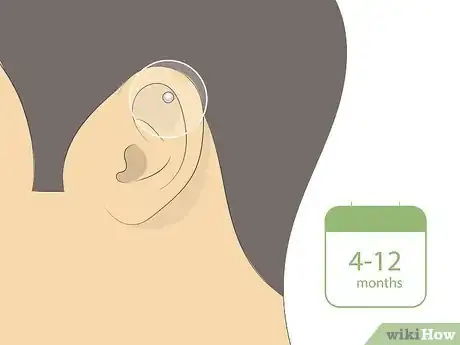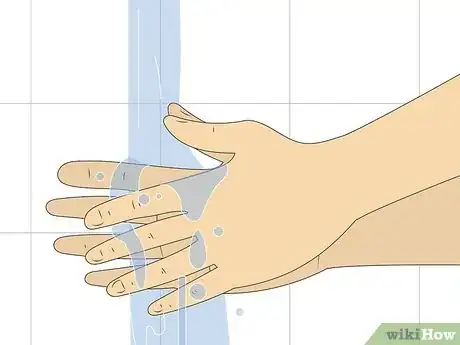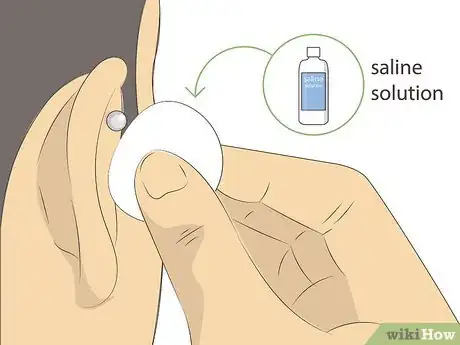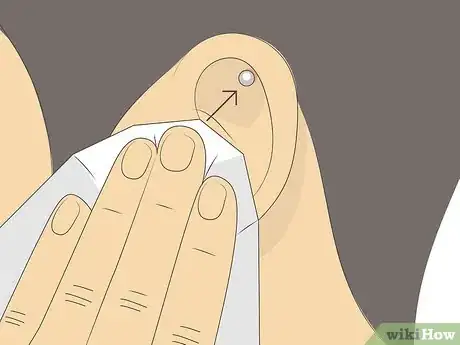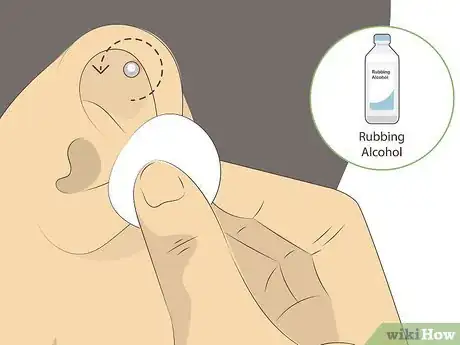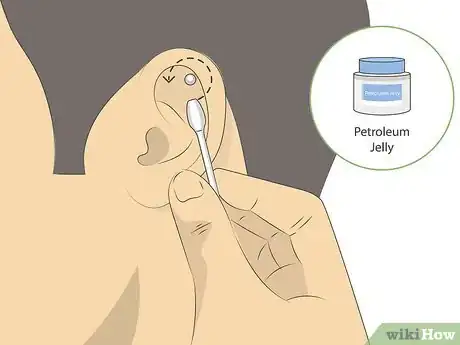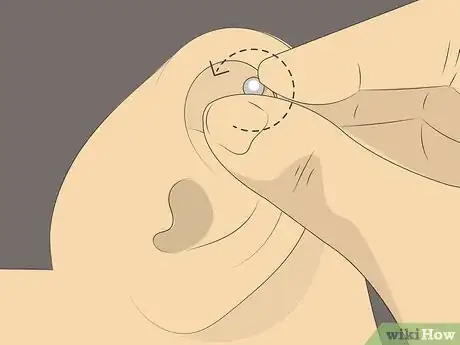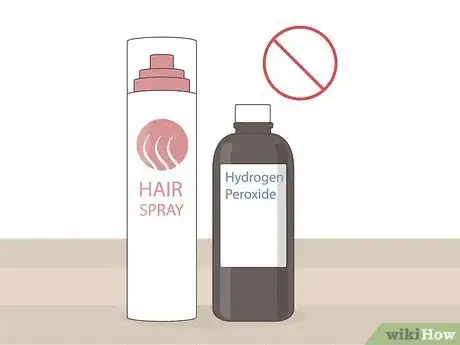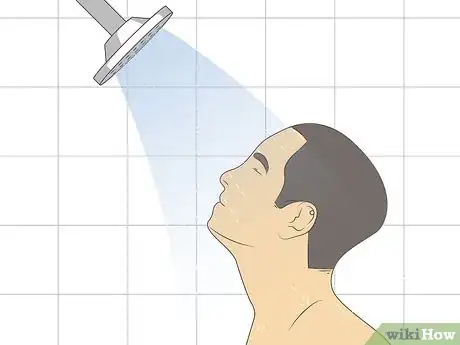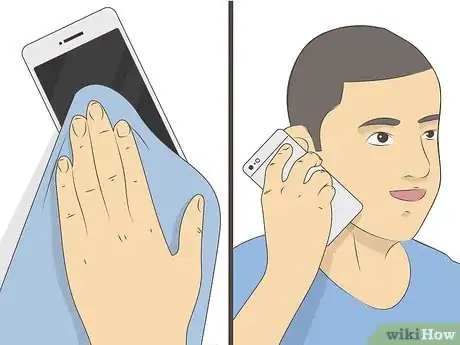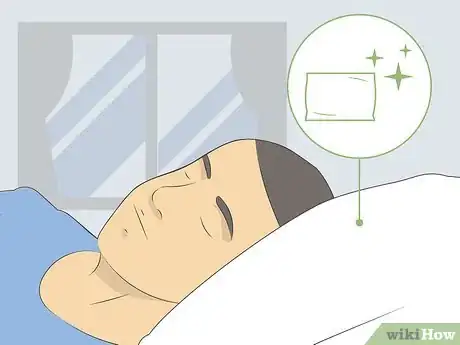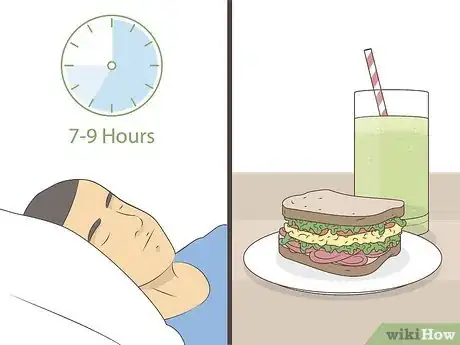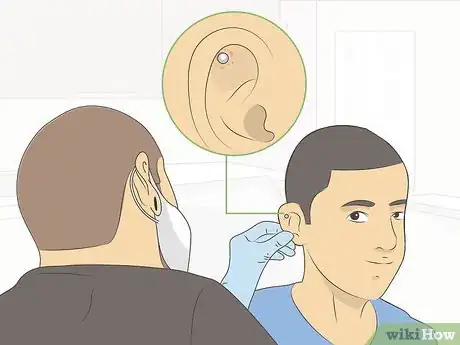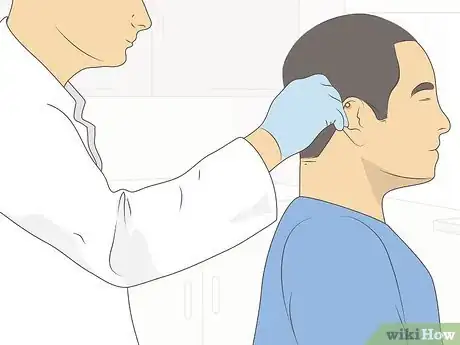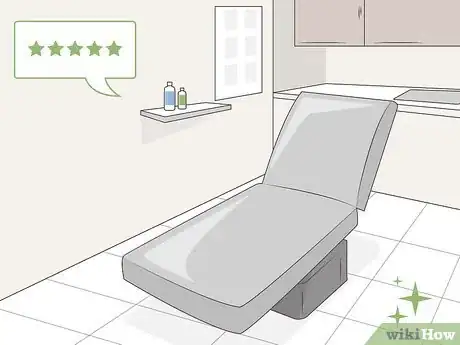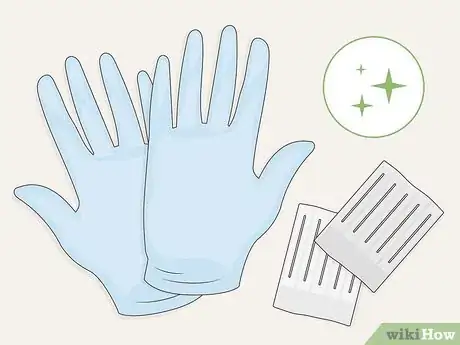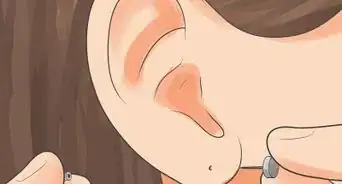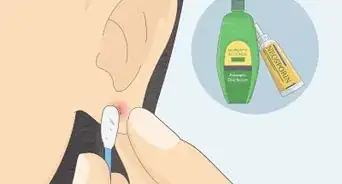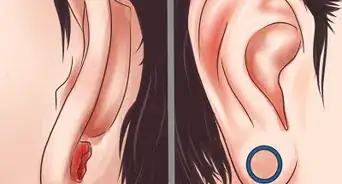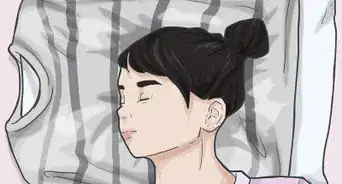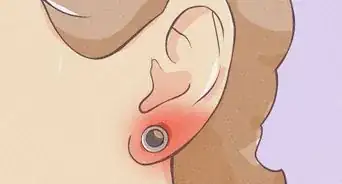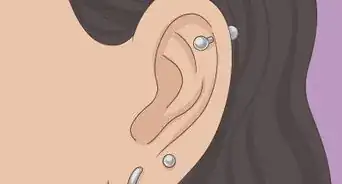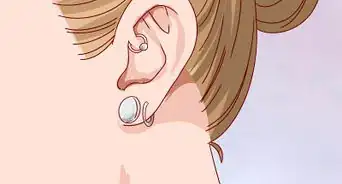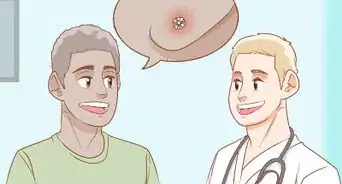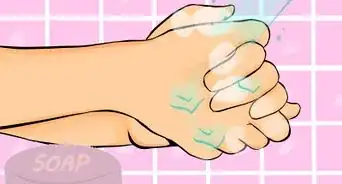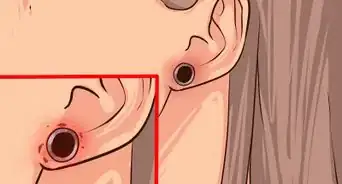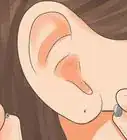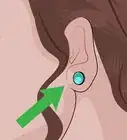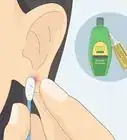This article was medically reviewed by Luba Lee, FNP-BC, MS. Luba Lee, FNP-BC is a Board-Certified Family Nurse Practitioner (FNP) and educator in Tennessee with over a decade of clinical experience. Luba has certifications in Pediatric Advanced Life Support (PALS), Emergency Medicine, Advanced Cardiac Life Support (ACLS), Team Building, and Critical Care Nursing. She received her Master of Science in Nursing (MSN) from the University of Tennessee in 2006.
There are 9 references cited in this article, which can be found at the bottom of the page.
This article has been viewed 46,016 times.
Cartilage piercings are a great way to show off your individual style. However, they do take longer to heal than ear lobe piercings. Plan on caring for your healing cartilage piercing for anywhere from 4-12 months. The good news is that it’s not hard. Make sure to keep the area clean and avoid unnecessarily exposing the cartilage to germs. If you suspect that it is infected, seek medical care. Caring for your piercing will be even easier if you make sure to choose a clean, safe environment to get your cartilage pierced.
Steps
Caring for Your Piercing
-
1Care for healing cartilage for 4 months to 1 year. Cartilage can take longer to heal than most piercings since it is a hard substance. Plan to carefully monitor and clean your cartilage for several months after getting pierced. There are lots of signs that indicate that your cartilage is still healing. Look for:[1]
- Swelling, bleeding, or redness for the first few weeks
- Discoloration or itching[2]
-
2Ask your piercer about their guidelines for healing. Before you leave the piercing studio, take a minute to chat with the piercing professional. Ask them how you should care for your piercing and how long it might take to heal. There are general guidelines for this, but your piercer might have some additional insight.[3]
- Make sure to ask if there are any products you should use or any you should avoid.
Advertisement -
3Wash your hands before touching your ear or jewelry. Use warm water and mild hand soap to wash your hands for at least 20 seconds. When you’re done, dry your hands on a clean, dry towel. Do this anytime you need to clean or touch your piercing.[4]
- Never touch or play with the jewelry with dirty hands, as this can cause an infection.
-
4Clean the piercing daily with saline or a mild soap. Saturate a cotton ball or piece of a paper towel with saline solution and dab the area around your piercing. Alternatively, you can wet a paper towel, add a few drops of soap, and gently pat the area around the piercing.[5]
- You can do this once or twice a day as your cartilage heals.
- Purchase saline at any drug or box store.
-
5Rinse the area with water and pat dry after cleaning it. Use a clean, damp paper towel to wipe away any soap or saline. Just gently blot the area around the piercing. There is no need to try to move the piercing. Cleansing the area around it is sufficient.[6]
- Pat the area dry with a clean paper towel. Using a cloth towel could snag on the jewelry, and it also might carry bacteria.
-
6Apply rubbing alcohol to the skin around the piercing with a cotton ball. Dip a cotton ball in rubbing alcohol to wet it and then wring out the excess. Swipe the cotton ball around the outer edges of the piercing, but don’t wipe the piercing itself as this might sting.[7]
- Repeat this 2 to 3 times daily.
-
7Coat the area around the piercing with a thin layer of petroleum jelly. Use a cotton swab to spread the petroleum jelly around the piercing, but don’t apply it directly to the opening. This will help to protect the area and prevent scabbing.[8]
- Repeat 2 to 3 times daily.
-
8Twist the earring a few times every day. Turn the earring around in your ear by twisting it clockwise or counterclockwise a few times. Repeat this 3 times daily. This will help to keep the earring from getting stuck to the skin and keep the hole open as the piercing heals.[9]
-
9Avoid cleaning the ear with harsh products or ointments. Do not use hydrogen peroxide or any strong soaps to clean your piercing. They can actually damage your healing cartilage. Check the label on soaps and avoid any that contain triclosan.[10]
- Avoid using any cosmetic or beauty products near your cartilage. For example, hairspray could irritate it.
Preventing Infections While Healing
-
1Take showers, not baths, to keep your ear clean. A bath might feel nice and relaxing, but you risk exposing your healing cartilage to germs from the water. Opt for showers while you are healing. If you can’t avoid taking a bath, make sure to clean the tub thoroughly before getting in.[11]
- You should also avoid swimming pools and hot tubs while you’re healing. They can also harbor germs.
-
2Keep everything clean that touches your ear. If you’re going to place an object near your ear, take a minute to clean it. You can use a disinfectant wipe to wipe away any dirt or germs. Items you should clean before use include:[12]
- Phones
- Eye glasses
- Headphones
- Hats and helmets
-
3Use clean sheets and pillowcases to avoid germs. A good rule of thumb is to wash your bedding at least once a week. Make sure to do this while you're healing. Purchase a spare set of sheets if you don't have time to do the laundry once a week. While you’re healing, rest your head on a clean pillowcase each night. Flip the pillowcase over to get some extra wear out of each pillowcase by turning it over to the clean side on the second night you use that case.[13]
- If you start running out of pillowcases, you can substitute a clean t-shirt and place that over your pillow.
-
4Maintain a healthy lifestyle to promote healing. Your body will be able to heal itself more quickly if you take good care of it. It’s always important to eat a healthy diet, but it’s especially important while you’re healing. You should also make sure to get 7-9 hours of sleep each night. Rest will help you heal.[14]
- Exercise is safe while you are healing. It can also help reduce stress, which is great because your body will heal faster if you’re not feeling stressed out.
-
5See your piercer or doctor if you develop bumps on your cartilage. You may notice small bumps forming near your piercing. The bumps might be red and swollen or painful. Don't worry, this is fairly common. Typically, bumps are caused by a bacterial infection or an overgrowth of fibrous tissue. If you experience any bumps or pain, contact your healthcare provider.[15]
- Depending on the cause, they might prescribe medication or recommend a procedure to remove the bumps.
-
6Seek medical care if you suspect an infection. You need to visit a doctor if your cartilage is infected. Schedule an appointment if the area around your piercing is red, painful, itchy, oozing yellowish discharge, and swollen.[16]
Getting a Safe Cartilage Piercing
-
1Make sure the piercing studio is clean and has a good reputation. When you walk into the studio, it should be visibly clean. Take a look around to determine if the floor or stations look dirty. If they appear dirty, it’s a good bet that other surfaces are dirty, too. That could cause an infection, so steer clear of dirty salons. Go check out another place so that you can have a better chance of avoiding infection.[17]
- Check out the studio’s social media presence. If they seem to get a lot of negative comments, you might want to look for a piercer somewhere else.
- It’s important to ensure that the piercing parlor is a certified, trustworthy establishment since their standards for cleanliness will be higher if they are.[18]
-
2Ask the piercer to use a sterilized needle and wear gloves. Don’t allow the piercer to use a piercing gun on your cartilage. Not only could a gun cause scarring or other damage, but it also can't be sanitized between uses, which increases the risk of infection. Only allow your piercer to use a sterilized needle, and take your business elsewhere if they don’t agree.[19]
- Ask the piercer to wear a new pair of disposable gloves before handling equipment or touching your ear. This can help prevent infection.
-
3Choose gold for your piercing for the safest choice. Gold is naturally anti-bacterial so it is your best bet for keeping germs away from your piercing. Look for a piece of jewelry that you like in any color of gold. [20]
- Many people are allergic to nickel, so it’s safest to avoid any jewelry with nickel in it.
Resources
- ↑ https://youngwomenshealth.org/2013/08/07/body-piercing/
- ↑ https://www.safepiercing.org/docs/APP_AftercareMinors_Web.pdf
- ↑ https://www.safepiercing.org/docs/APP_AftercareMinors_Web.pdf
- ↑ https://www.safepiercing.org/docs/APP_AftercareMinors_Web.pdf
- ↑ https://www.safepiercing.org/docs/APP_AftercareMinors_Web.pdf
- ↑ https://www.nhs.uk/conditions/body-piercing/
- ↑ https://www.aad.org/public/skin-hair-nails/skin-care/caring-for-pierced-ears
- ↑ https://www.aad.org/public/skin-hair-nails/skin-care/caring-for-pierced-ears
- ↑ https://www.aad.org/public/skin-hair-nails/skin-care/caring-for-pierced-ears
- ↑ https://www.safepiercing.org/docs/APP_AftercareMinors_Web.pdf
- ↑ https://www.safepiercing.org/docs/APP_AftercareMinors_Web.pdf
- ↑ https://www.safepiercing.org/docs/APP_AftercareMinors_Web.pdf
- ↑ https://www.safepiercing.org/docs/APP_AftercareMinors_Web.pdf
- ↑ https://www.safepiercing.org/docs/APP_AftercareMinors_Web.pdf
- ↑ https://www.ncbi.nlm.nih.gov/pmc/articles/PMC1071670/
- ↑ https://www.mayoclinic.org/ear-piercing-infection/expert-answers/faq-20452841
- ↑ https://www.uofmhealth.org/health-library/tv7075
- ↑ https://www.ncbi.nlm.nih.gov/books/NBK537336/
- ↑ https://www.uofmhealth.org/health-library/tv7075
- ↑ https://www.uofmhealth.org/health-library/tv7075
